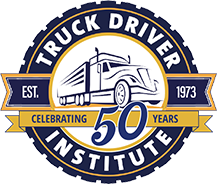The Ultimate Truck Maintenance Checklist
For any professional truck driver, ensuring the safety and performance of your truck is essential. Trucking is more than just driving from one place to another—it’s about delivering goods safely, efficiently, and on time. A well-maintained truck is the backbone of that success. Without routine maintenance, a truck can become prone to breakdowns, jeopardizing not only delivery schedules but also the safety of the driver and others on the road. A comprehensive truck maintenance checklist ensures that your vehicle remains in peak condition, significantly reducing the risk of costly repairs and road accidents. In this guide, we’ll outline a detailed truck maintenance checklist that every trucker should follow.

Why a Truck Maintenance Checklist is Important
Adhering to a regular truck maintenance schedule isn’t just about compliance with regulations; it’s about safety and efficiency. Truck drivers often cover hundreds or even thousands of miles per trip, so wear and tear on a vehicle is inevitable. When left unchecked, small issues can escalate into major problems, causing significant downtime and expensive repairs.
A proper truck maintenance checklist serves as a preventive measure, ensuring that critical parts of your truck are functioning correctly. It also helps truck drivers maintain compliance with federal and state regulations. The Federal Motor Carrier Safety Administration (FMCSA) requires drivers to perform a pre-trip inspection to make sure their vehicle is roadworthy before every trip. Following a maintenance checklist ensures you’re always in compliance.
Essential Truck Maintenance Checklist
A complete truck maintenance checklist should include both daily checks and periodic inspections, covering essential areas like tires, brakes, fluids, lights, and safety systems. Below is a breakdown of what you should include in your checklist.
Daily Pre-Trip Inspections
Before hitting the road, truck drivers are required to conduct a pre-trip inspection to ensure their vehicle is in good working condition. This can prevent avoidable accidents and breakdowns. Here are the key areas to cover in your daily pre-trip inspection:
- Brakes: Check both the service and parking brakes for wear and effectiveness. Ensure there are no air leaks in the air brake system.
- Tires: Inspect for proper inflation, tread wear, and any visible damage like cuts or bulges. Worn or underinflated tires can lead to blowouts.
- Lights and Signals: Make sure all exterior lights (headlights, brake lights, indicators) are working properly. Faulty lights can result in accidents, especially at night.
- Steering System: Ensure the steering wheel moves freely and without excessive play.
- Mirrors: Check for any cracks or obstructions in your side and rearview mirrors. Proper visibility is crucial for safe driving.
- Windshield Wipers: Test the wipers and windshield washer fluid levels. Clear visibility during adverse weather is vital for safety.
- Horn: Ensure the horn is functioning properly to alert other drivers of your presence when necessary.
Weekly or Biweekly Maintenance Checks
In addition to your daily inspections, it’s essential to conduct more thorough checks on a weekly or biweekly basis. These checks cover areas that might not require daily attention but are critical to your truck’s overall health.
- Engine Oil: Check the oil level and top it off if necessary. Low oil levels can lead to engine failure. If you notice the oil is dirty, it may be time for an oil change.
- Transmission Fluid: Check fluid levels in the transmission to ensure smooth shifting. Low transmission fluid can result in hard shifting or transmission damage.
- Coolant Levels: Inspect the coolant levels to prevent engine overheating, especially during long hauls.
- Battery Condition: Ensure the battery terminals are clean and free of corrosion. Check for any signs of a weak battery, such as slow engine starts.
- Belts and Hoses: Look for any signs of wear, cracking, or fraying in the engine belts and hoses. If any issues are found, replace them immediately to prevent a breakdown.
- Suspension System: Inspect the suspension for signs of damage or excessive wear. Pay special attention to the springs and shocks, as a failing suspension can affect the truck’s stability.
Monthly and Seasonal Maintenance
Certain truck maintenance tasks can be done every month or as seasons change. These inspections usually involve more in-depth servicing and ensure that your truck can handle long-distance trips and extreme weather conditions.
- Air Filters: Check and clean or replace air filters to ensure your engine is breathing properly. Dirty air filters can reduce fuel efficiency and performance.
- Fuel Filters: Change your fuel filters according to the manufacturer’s guidelines. Clean fuel filters help keep your fuel system running smoothly.
- Alignment and Tire Rotation: Misaligned wheels can cause uneven tire wear, reducing the lifespan of your tires. Regular tire rotations help to ensure even wear across all tires.
- Brake Pads and Rotors: Inspect the brake pads and rotors for wear. If the brake pads are thin or the rotors are grooved, replace them immediately.
- Exhaust System: Inspect the exhaust system for leaks, which can affect engine performance and fuel efficiency.
- Heating and Air Conditioning: Check that both the heating and air conditioning systems are functioning properly. Climate control is important for driver comfort during long hauls.
Emergency Equipment Checks
In addition to mechanical and functional inspections, it’s crucial to ensure your truck is equipped with essential emergency tools and supplies. These items can make a huge difference in the event of an emergency or breakdown.
- Fire Extinguisher: Make sure your fire extinguisher is fully charged and easily accessible.
- Reflective Triangles: Ensure that you have reflective triangles or road flares to alert other drivers if you need to stop on the roadside.
- First Aid Kit: Keep a well-stocked first aid kit in your truck. Be sure to check expiration dates on medications and bandages.
- Spare Tire and Jack: Always carry a spare tire and the tools needed to change a flat tire. Verify that the spare is properly inflated.
The Benefits of Regular Truck Maintenance
Staying on top of your truck maintenance checklist offers several key benefits. Regular inspections and servicing help prevent sudden breakdowns, which can leave you stranded in inconvenient or dangerous locations. They also improve fuel efficiency, reducing overall operational costs. Furthermore, well-maintained trucks are less likely to violate FMCSA regulations, saving you from hefty fines and keeping your business reputation intact.
Moreover, performing regular maintenance can extend the lifespan of your truck. Long-haul trucks endure a lot of strain, and neglecting maintenance will only shorten their service life. A properly maintained truck is also easier to sell or trade in, should you choose to upgrade your vehicle in the future.
Truck Maintenance Checklist for Harsh Weather Conditions
Harsh weather conditions such as winter snowstorms or summer heat waves can add an extra layer of stress on your truck. Preparing your truck for these conditions can prevent weather-related breakdowns. During winter, make sure to:
- Check Anti-Freeze Levels: Ensure that your truck’s coolant is prepared for freezing temperatures.
- Test the Heating System: The heating system not only keeps you comfortable but also prevents the engine from freezing in sub-zero temperatures.
- Inspect Tires for Snow Conditions: Depending on where you are driving, you may need snow tires or chains for safe travel in icy conditions.
For hot summer months, focus on:
- Coolant and Radiator Health: Make sure the cooling system is working properly to prevent engine overheating.
- Air Conditioning System: Verify that the A/C system is in good working order to ensure driver comfort during long, hot trips.
Keeping Your Truck Road-Ready for Every Journey
For truck drivers, maintaining a strict truck maintenance checklist isn’t just a matter of following regulations—it’s an investment in safety, efficiency, and long-term savings. Whether you’re conducting daily inspections or scheduling seasonal maintenance, each task plays a crucial role in keeping your truck roadworthy. Neglecting routine maintenance can lead to avoidable breakdowns, hefty repair bills, and even accidents.
By following this comprehensive truck maintenance checklist, you can ensure your truck remains reliable, efficient, and compliant with industry standards. Prioritize regular maintenance, and your truck will serve you well for many years and miles to come.
Frequently Asked Questions
What should be checked during a truck’s pre-trip inspection?
A truck’s pre-trip inspection should include brakes, tires, lights, steering system, mirrors, windshield wipers, and the horn.
How often should truck tires be checked?
Tires should be inspected daily for inflation and wear and should be rotated regularly to ensure even wear.
What is the most important part of truck maintenance?
While all parts of truck maintenance are important, ensuring the brake system is functioning properly is critical for safety.
How often should engine oil be checked?
Engine oil levels should be checked weekly or biweekly, and oil should be changed as per the manufacturer’s recommendation.
Can regular truck maintenance prevent accidents?
Yes, regular truck maintenance reduces the risk of mechanical failure, which can lead to accidents.
What tools should every truck carry for emergencies?
Every truck should have a fire extinguisher, reflective triangles, a first aid kit, and a spare tire with the tools to change it.
Get Started
Get your Class A CDL in our friendly, supportive CDL training program. TRAIN with experienced instructors – multiple good-paying, secure job choices with benefits available for eligible graduates. EARN $700 – $1000+ / week to start as a truck driver. Get started today by filling out the form below. We look forward to hearing from you!



